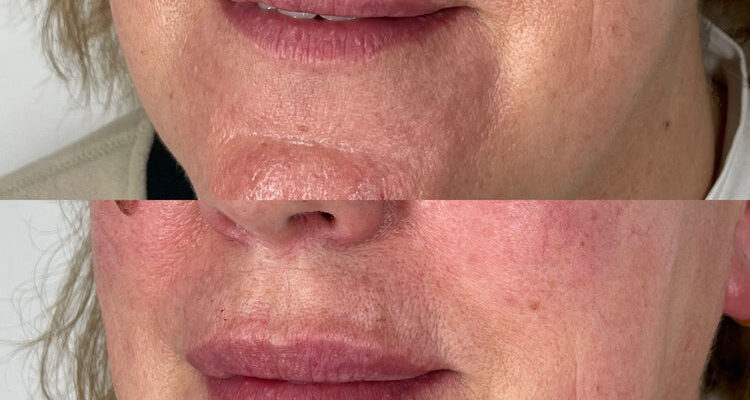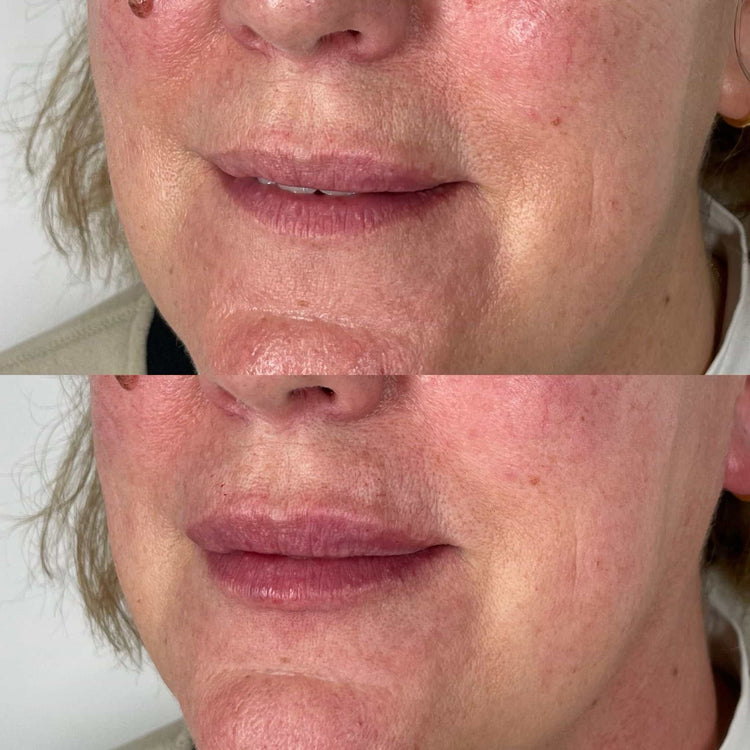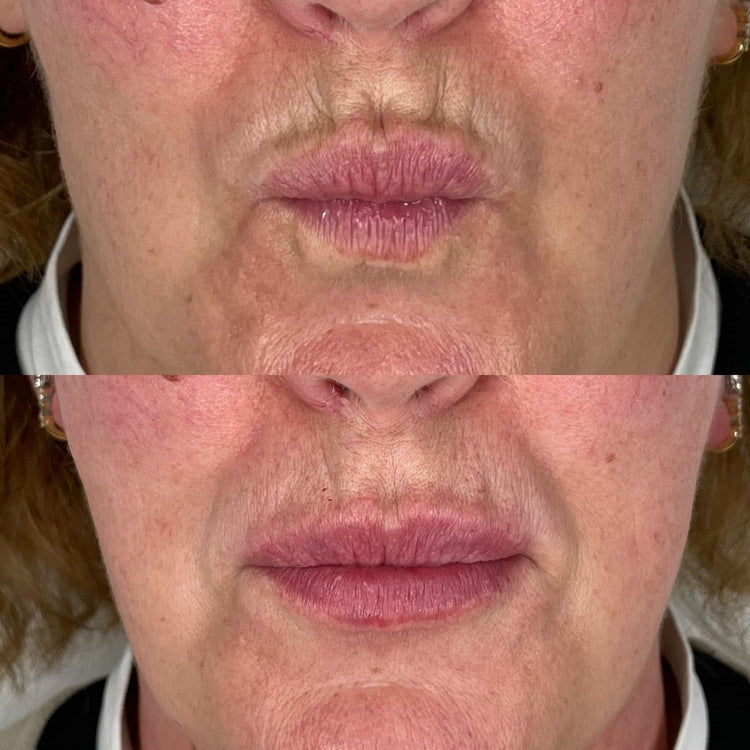How Dermal Fillers Help Restore Facial Volume
May 10, 2025

The Science Behind Dermal Fillers
Dermal fillers are becoming increasingly popular for their ability to restore lost facial volume and smooth out wrinkles. These injectable treatments contain hyaluronic acid, a naturally occurring substance in the body that attracts and retains water. When injected into specific areas of the face, dermal fillers plump up skin, reducing the appearance of fine lines, wrinkles, and folds. This non-surgical approach offers a temporary solution to signs of aging, helping individuals regain a more youthful and refreshed appearance.
Types of Hyaluronic Acid Fillers
Hyaluronic acid (HA) is a naturally occurring substance found in our bodies that acts like a sponge, drawing water molecules to keep skin hydrated and plump. As we age, our natural HA production declines, leading to wrinkles, folds, and loss of facial volume. Dermal fillers utilize synthetic HA, designed to mimic the body’s natural HA, to replenish lost volume and smooth out these signs of aging.
There are various types of hyaluronic acid fillers available, each with unique properties tailored to address specific concerns. Some popular examples include:
• **Juvéderm XC:** This versatile filler is used to address moderate to severe wrinkles, restore volume to cheeks and lips, and sculpt the jawline.
• **Restylane Lyft:** Known for its volumizing capabilities, Restylane Lyft is commonly used to enhance cheekbones, smooth nasolabial folds (smile lines), and add fullness to the lips.
• **Belotero Balance:** This ultra-fine filler is ideal for addressing delicate areas like the under-eye area and smoothing fine lines around the mouth.
Other Types of Fillers
Dermal fillers are injectable substances used to restore facial volume and smooth wrinkles. These treatments rely on hyaluronic acid (HA), a naturally occurring substance found in the body that binds with water, keeping skin hydrated and plump. As we age, our natural HA production decreases, leading to wrinkles, folds, and loss of facial volume.
Dermal fillers utilize synthetic HA to replenish lost volume and smooth these signs of aging. Different types of HA fillers exist, each designed for specific concerns.
Beyond hyaluronic acid fillers, other types of fillers are available:
• **Calcium Hydroxylapatite (CaHA):** This filler is often used to address deeper wrinkles and restore volume to the cheeks and jawline. It stimulates collagen production, providing long-lasting results.
• **Poly-L-lactic Acid (PLLA):** This type of filler gradually dissolves over time, stimulating collagen production and volumizing the skin. It’s often used for cheek augmentation and wrinkle reduction.
Choosing the right filler depends on individual needs, desired outcomes, and the specific areas being treated.

How Fillers Work
Dermal fillers are injectable substances that restore facial volume and smooth wrinkles. They work by utilizing hyaluronic acid (HA), a naturally occurring substance in our bodies that attracts and holds water, keeping skin hydrated and plump. As we age, our natural HA production decreases, leading to wrinkles, folds, and loss of facial volume.
Dermal fillers contain synthetic HA designed to mimic the body’s natural HA. When injected into specific areas of the face, these fillers attract water, plumping up the skin and reducing the appearance of fine lines, wrinkles, and folds. This temporary solution helps individuals regain a more youthful and refreshed appearance.
Benefits of Dermal Fillers for Volume Restoration
Dermal fillers have become increasingly popular as a non-surgical way to restore lost facial volume and smooth away wrinkles. These injectable treatments utilize hyaluronic acid (HA), a naturally occurring substance that attracts and retains water, to plump up the skin. As we age, our natural HA production declines, leading to visible signs of aging like wrinkles, folds, and loss of facial fullness. Dermal fillers replenish this lost HA, restoring volume and smoothing out these imperfections for a more youthful appearance.
Reducing the Appearance of Wrinkles and Fine Lines
Dermal fillers are an increasingly popular choice for addressing facial aging concerns. They work by replenishing lost facial volume and smoothing wrinkles, resulting in a more youthful appearance.
- Volume Restoration: Dermal fillers add volume to areas of the face that have lost fullness over time, such as cheeks, lips, and jawline. This can help to restore a more sculpted and balanced facial profile.
- Wrinkle Reduction: Fillers can smooth out wrinkles and fine lines by plumping up the skin and reducing the appearance of creases. They are particularly effective at addressing moderate to severe wrinkles around the mouth, nose, and forehead.
- Long-lasting Results: While dermal fillers are temporary, their effects can last for several months to a year or more, depending on the type of filler used and individual factors.
Cheek Augmentation
Dermal fillers offer numerous benefits for restoring facial volume and enhancing appearance.
One primary benefit is volume restoration. As we age, our natural fat stores diminish, leading to hollowing in areas like the cheeks and temples. Dermal fillers can replenish this lost volume, creating a more youthful and full-looking face.
Fillers are also highly effective at smoothing wrinkles and fine lines. By injecting hyaluronic acid beneath the skin, they plump up the area, minimizing the appearance of creases and folds. This results in a smoother, more even complexion.
The effects of dermal fillers are temporary, typically lasting six to eighteen months depending on the type of filler used.
Jawline Definition
Dermal fillers offer numerous benefits for restoring facial volume and enhancing appearance.
One primary benefit is volume restoration. As we age, our natural fat stores diminish, leading to hollowing in areas like the cheeks and temples. Dermal fillers can replenish this lost volume, creating a more youthful and full-looking face.
Fillers are also highly effective at smoothing wrinkles and fine lines. By injecting hyaluronic acid beneath the skin, they plump up the area, minimizing the appearance of creases and folds. This results in a smoother, more even complexion.
Lip Enhancement
Dermal fillers are an increasingly popular non-surgical option for restoring lost facial volume and smoothing wrinkles. These injectable treatments utilize hyaluronic acid (HA), a substance naturally found in the body that attracts and retains water, keeping skin hydrated and plump.
As we age, our natural HA production declines, leading to visible signs of aging like wrinkles, folds, and loss of facial fullness. Dermal fillers replenish this lost HA, restoring volume and smoothing out these imperfections for a more youthful appearance.
Dermal fillers offer several benefits for those seeking to restore facial volume and enhance their appearance:
- Volume Restoration: Fillers can add volume to areas of the face that have lost fullness over time, such as cheeks, lips, and jawline. This can help to restore a more sculpted and balanced facial profile.
- Wrinkle Reduction: Fillers effectively smooth wrinkles and fine lines by plumping up the skin and reducing the appearance of creases and folds, leading to a smoother complexion.
- Long-lasting Results: While temporary, dermal fillers can provide noticeable results that last for several months to a year or more, depending on the type of filler used and individual factors.
Procedure Details
Dermal fillers offer a non-surgical approach to restoring facial volume and smoothing wrinkles. These injectable treatments utilize hyaluronic acid (HA), a naturally occurring substance in our bodies that attracts and retains water, keeping skin hydrated and plump. As we age, our natural HA production decreases, leading to visible signs of aging such as wrinkles, folds, and loss of facial fullness.
Dermal fillers work by replenishing lost HA, restoring volume and smoothing out these imperfections for a more youthful appearance. Different types of HA fillers are available, each with unique properties tailored to address specific concerns.
Consultation and Planning
The procedure typically involves several steps. First, a thorough consultation will be conducted to discuss your goals, medical history, and any potential risks or side effects. During this consultation, the practitioner will assess your facial structure and determine the best type of filler and injection technique for you.

Once the treatment plan is finalized, a topical anesthetic may be applied to numb the area. Then, the chosen filler will be injected precisely into specific areas of the face using a fine needle. You may experience some minor discomfort during the injections, but it is generally well-tolerated.
After the procedure, you may have mild swelling, redness, or bruising around the injection sites. These side effects typically subside within a few days. Your practitioner will provide aftercare instructions to minimize any potential complications and ensure optimal healing.
The Procedure Itself
The procedure for dermal fillers generally involves several steps. An initial consultation is essential to discuss your aesthetic goals, medical history, and potential risks or side effects. During this consultation, the practitioner will evaluate your facial features to determine the most suitable type of filler and injection technique tailored to your specific needs.
Prior to the injections, a topical anesthetic may be applied to minimize discomfort. Then, using a fine needle, the chosen filler is carefully injected into designated areas of the face.
Some patients may experience mild discomfort during the injections, but it is usually well-tolerated. Afterward, you might notice temporary swelling, redness, or bruising around the injection sites. These side effects typically resolve within a few days.
Your practitioner will provide post-treatment instructions to help minimize any potential complications and promote optimal healing.
Recovery and Aftercare Instructions
The procedure for administering dermal fillers is relatively straightforward. It typically begins with a consultation where the practitioner will discuss your aesthetic goals, medical history, and any potential risks or side effects associated with the treatment.
During this consultation, they will also assess your facial structure to determine the most suitable type of filler and injection technique for your desired outcome.
Before the injections, a topical anesthetic may be applied to minimize discomfort. The chosen filler is then injected precisely into specific areas of the face using a fine needle.
You might experience mild discomfort during the injections, but it’s generally well-tolerated.
After the procedure, there may be some temporary swelling, redness, or bruising around the injection sites. These side effects usually subside within a few days. It is important to follow your practitioner’s post-treatment instructions carefully to minimize any potential complications and ensure optimal healing.
Recovery from dermal fillers is typically very quick. You can usually resume your normal activities immediately following the procedure. Avoid touching or massaging the treated area for at least 24 hours to prevent any displacement of the filler.
To minimize swelling and bruising, apply ice packs to the treated areas as directed by your practitioner.
It is also important to avoid strenuous activity, extreme heat, and exposure to direct sunlight for a few days after the treatment.
You should attend any follow-up appointments scheduled by your practitioner to monitor your healing progress and ensure you are satisfied with the results.
Potential Risks and Side Effects
While dermal fillers offer numerous benefits for restoring facial volume and smoothing wrinkles, it’s essential to be aware of potential risks and side effects. These can range from mild and temporary, such as swelling, redness, or bruising at the injection site, to more serious complications like infection or allergic reactions.
Common Side Effects
Potential risks and side effects associated with dermal fillers are generally mild and temporary.
Common side effects include:
- Redness and swelling at the injection site
- Bruising
- Tenderness or soreness
- Lumps or bumps under the skin
These side effects typically resolve within a few days to a week.
More serious but less common risks include infection, allergic reactions, and vascular occlusion (blockage of a blood vessel).
It is crucial to choose a qualified and experienced practitioner who uses sterile techniques and high-quality fillers to minimize the risk of complications.
Serious Complications (rare)
Although generally safe, dermal fillers can have potential risks and side effects. Most are mild and temporary, including redness, swelling, bruising, tenderness, and itching at the injection site. These usually subside within a few days.
More serious but less common complications include infection, allergic reactions, or vascular occlusion (blockage of blood vessels). Vascular occlusion is a rare but potentially dangerous risk where a filler is injected into a blood vessel, cutting off blood supply to the area. This can lead to tissue damage and necrosis.
It is essential to choose a qualified and experienced practitioner who uses sterile techniques and high-quality fillers. Discuss your medical history and any allergies thoroughly with your practitioner before undergoing treatment.
Long-Term Considerations
Dermal fillers offer a non-surgical approach to addressing signs of aging, providing temporary volume restoration and wrinkle smoothing. While their effects are not permanent, understanding the long-term considerations associated with these treatments is crucial for informed decision-making.
Duration of Results
The duration of results from dermal fillers varies depending on the type of filler used and individual factors such as metabolism and lifestyle. Generally, hyaluronic acid fillers last anywhere from six to eighteen months. Over time, the body gradually breaks down the hyaluronic acid, causing the volume to diminish and the wrinkles to become more apparent.
Repeat treatments are typically required to maintain the desired results. Some fillers, like those containing calcium hydroxylapatite (CaHA), may provide longer-lasting effects due to their ability to stimulate collagen production, extending the overall duration of the result. It’s important to consult with a qualified practitioner to determine the most suitable filler type and treatment plan based on your individual needs and goals.
Maintenance Treatments
The longevity of dermal filler results depends on factors like the specific type of filler used, individual metabolism, lifestyle choices, and sun exposure. Hyaluronic acid fillers, for instance, typically last 6 to 18 months.
Repeated treatments are generally necessary to maintain the desired volume and wrinkle reduction. Some fillers, like those containing calcium hydroxylapatite (CaHA), can provide longer-lasting effects due to their ability to stimulate collagen production.
Regular touch-up appointments with a qualified practitioner will help ensure optimal results and longevity. They can assess your needs, determine the appropriate type of filler for each session, and advise on the best maintenance schedule for you.
Alternatives to Fillers
When considering long-term effects, it’s important to remember that dermal fillers are temporary. Results typically last between six to eighteen months, after which touch-up treatments are needed to maintain the desired outcome. The specific duration of results varies depending on factors like the type of filler used, individual metabolism, and lifestyle.
Beyond hyaluronic acid fillers, alternatives like calcium hydroxylapatite (CaHA) can stimulate collagen production, potentially leading to longer-lasting effects.
Exploring options like fat grafting or thread lifts could offer more permanent solutions for facial volume restoration, though these procedures come with different considerations and potential risks.
Ultimately, discussing your long-term goals and desired outcomes with a qualified practitioner is crucial for determining the most appropriate treatment approach. They can help you weigh the benefits and limitations of various options to make an informed decision that aligns with your individual needs and aesthetic aspirations.
Book your lip filler appointment with Dr. Laura Geige at It’s Me & You Clinic
- How Gaslighting Creates Confusion And Distrust In Relationships - September 30, 2025
- Gummy Smile Treatment – Gum Contouring Near Cobham, Surrey - September 27, 2025
- Filler For Defined Jaw In Farnham, Surrey - September 24, 2025
